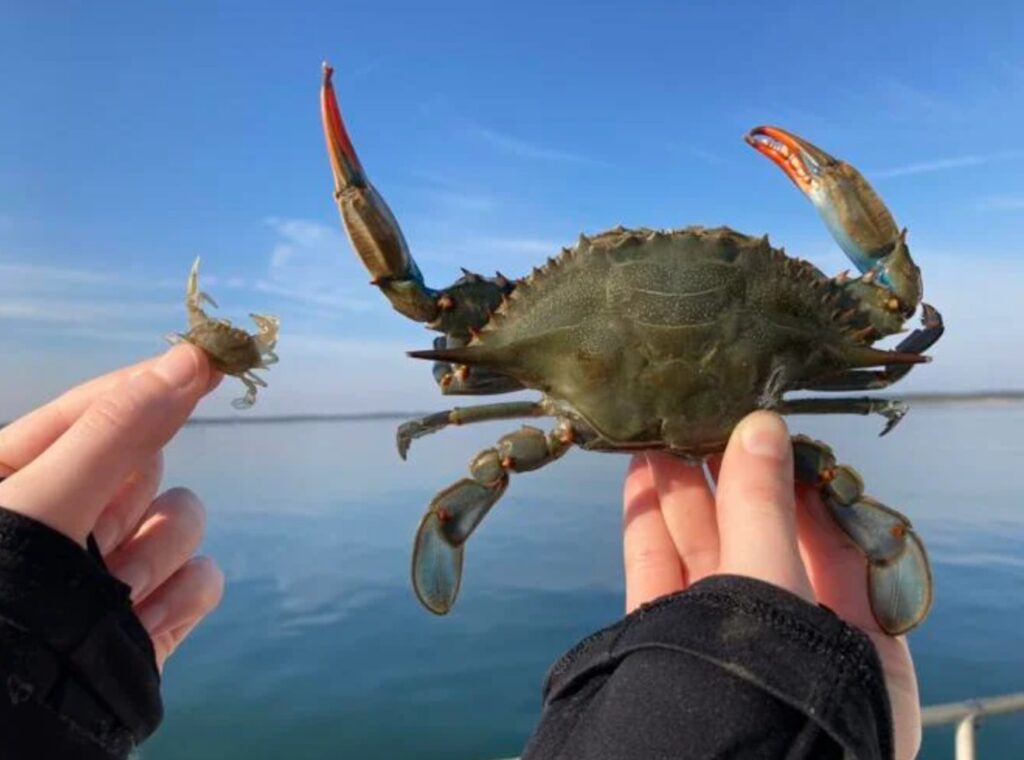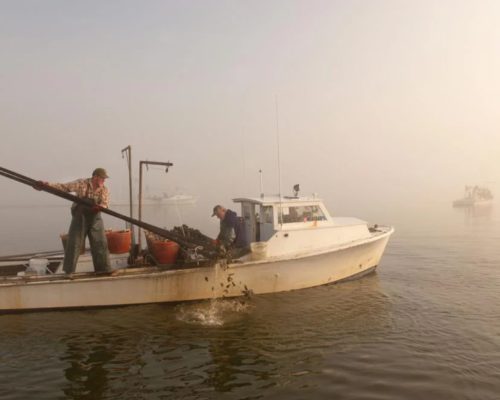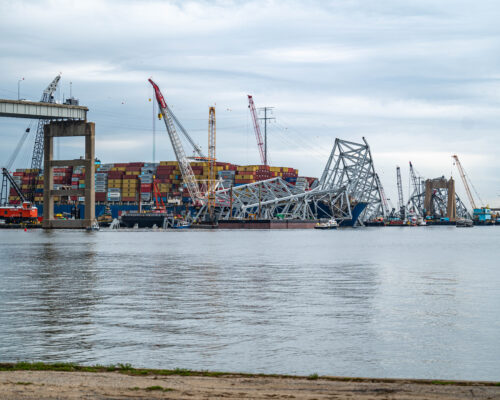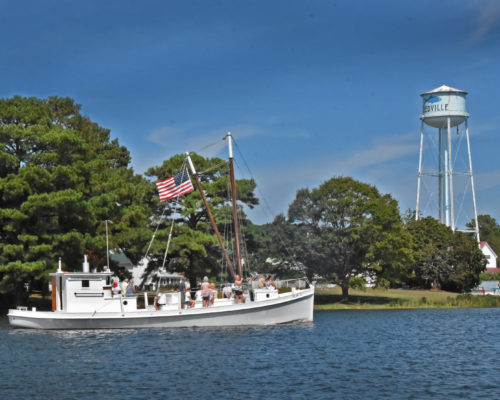The Chesapeake Bay’s blue crab population is holding steady but remains below average, new data show, easing but not completely dispelling worries about the long-term viability of the region’s most important commercial and popular recreational fishery.
The recent winter dredge survey, conducted each year by the Maryland Department of Natural Resources and Virginia Institute of Marine Science, found about 317 million crabs in the Bay and its tributaries, the two agencies announced. That is down slightly from last year’s estimate of 323 million crabs, though well above the all-time low of 227 million crabs in 2022.
The tally of spawning-age female crabs—a critical indicator of the overall crab stock’s health—decreased by 12.5 percent. But that number is still well above the threshold that biologists say is the minimum needed to sustain the population.
The abundance of juvenile crabs continued to recover from an all-time low in 2021 but remained well below average for the fifth year in a row. The survey found 138 million young crustaceans this year, a nearly 20% increase over the 2023 survey.
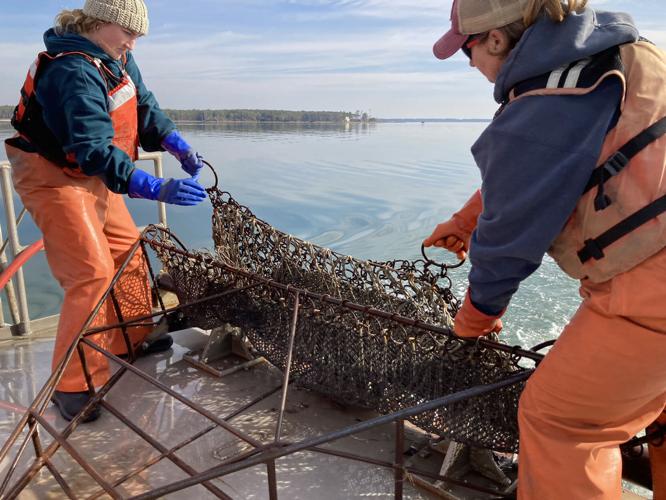
Photo: Timothy B. Wheeler
The survey, which has been jointly conducted since 1990, is widely regarded as a barometer of the Bay’s crab population, and its results are treated as a forecast of the commercial and recreational harvest for the year. Maryland and Virginia crews sample 1,500 sites Baywide from December through March, dragging a dredge across the bottom to collect and record the sex and size of crabs found slumbering there during cold weather.
A news release from the Virginia Marine Resources Commission said fishery managers in both states and at the Potomac River Fisheries Commission were “buoyed” by the survey results and “intend to sustain current harvest levels.” Jamie Green, Virginia’s marine resource commissioner, cited the state’s imposition of bushel harvest limits in 2013 as a key management measure.
Maryland managers sounded similarly optimistic, though a bit more cautious.
“An increase in juvenile recruitment is certainly welcome news, and the stock and population as a whole remains healthy,” said DNR Fishing and Boating Services director Lynn Fegley. “However, the continued relatively low recruitment numbers warrant a closer look at our approach moving forward.”
Blue crab reproduction varies from year to year under the influence of several factors, including weather, ocean conditions, available nursery habitat and predation by fish and even other crabs.
But scientists say the number of young crabs seen by the survey for the past decade has lagged well behind what they expected, given the measures taken in 2009 to maintain a robust stock of female crabs to produce new generations.
For that reason, the Chesapeake Bay Stock Assessment Committee, a group of state and federal fishery managers and independent scientists, recently decided to conduct a new assessment of the blue crab population. The multi-year analysis, which is to begin this summer, will evaluate a wide range of data and review the mathematical models used to gauge the stock and the level of harvest it can sustain. The last such assessment occurred in 2011. This one is to be completed in 2026.
“One of the big reasons we’re doing the stock assessment is that recruitment hasn’t been as good as we expected based on the last assessment,” said Mike Wilberg, a professor at the University of Maryland Center for Environmental Science who is leading the effort. “We want to take a look at this and figure out why things aren’t going the way we expect.”
Some think the winter dredge survey may simply be missing juvenile crabs, while others have suggested that the decline is real and many young crabs are being consumed by predators like the invasive blue catfish.
Meanwhile, after reviewing the 2024 survey results, the stock assessment committee is expected to advise fishery managers on what changes, if any, may be warranted in the short term.
Rom Lipcius, the VIMS crab researcher who oversees Virginia’s half of the survey, called the results “a mixed bag” and urged managers not to relax harvest limits.
What’s more, he suggested there may be reason to tighten limits on the seemingly healthy stock of female crabs. Research by one of his doctoral students indicates that many newly mature females may be caught before they have a chance to spawn, Lipcius said. That could explain the low count of juvenile crabs the survey has been finding lately, he added.
“We have to figure out a way to allow them to spawn before they’re harvested,” he said.
The commercial harvest Baywide in 2023 was 46 million pounds. Female crabs account for about one-fourth of the recreational and commercial harvest, according to DNR.
J.C. Hudgins, president of the Virginia Waterman’s Association, said the harvest so far this spring has been “okay.” Given the survey results and slight changes last year, he said, “I don’t expect to see much different” for 2024.
You can read this article in its entirety at bayjournal.com.

